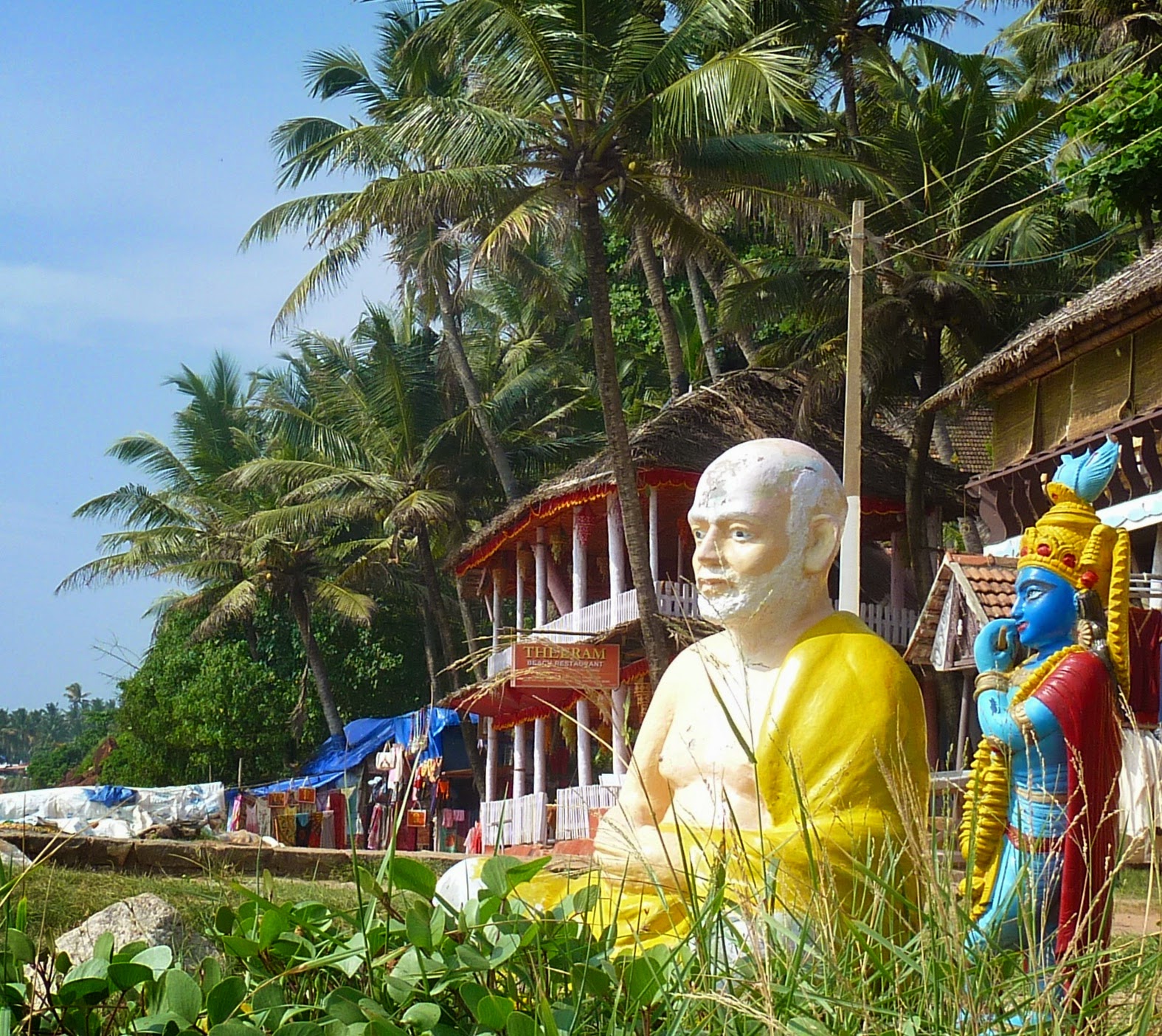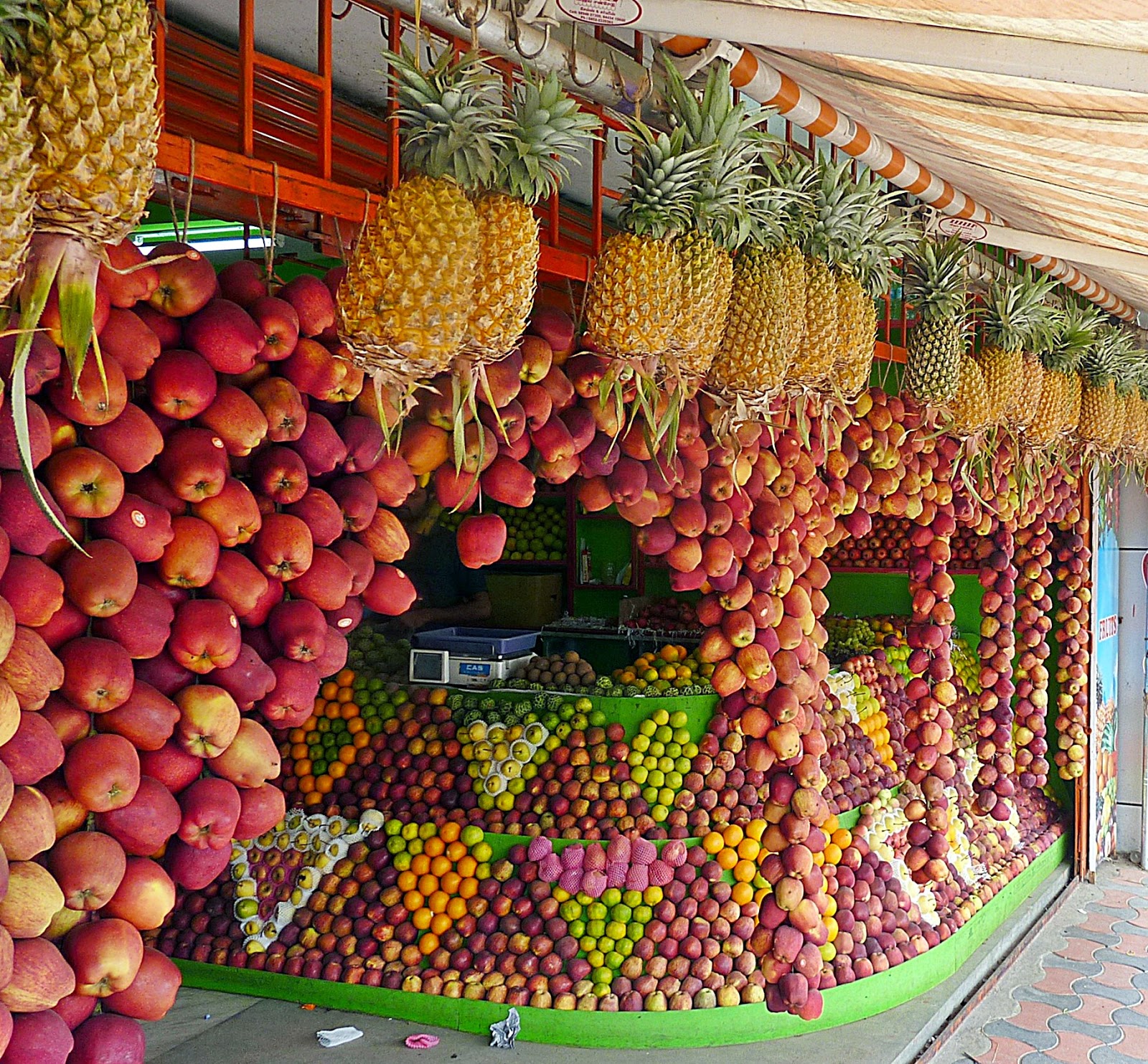 |
| 'Chinese' fishing nets... |
These legs were made for walking and that’s just what
they did today around the narrow winding streets of Kochi (aka Cochin) pop.
1.36 million on the historic Malabar spice coast of southern India. Kochi was
fortified by the Portuguese in 1530 in return for supporting the local
maharajah against a rival kingdom. Subsequently the Dutch arrived and burned
down much that had been built by the Portuguese. The last European settlement
was under the British East India Company. Today, Kochi is touristy, gift shops by the hundred and seems to be resting excessively for its
appeal on yesterdays colonial nostalgia. The historic old buildings are
literally falling down, with no apparent collective will to renovate and
improve the infrastructure, either from government or private investor groups.
The western tourists groups that I saw were heavily weighted towards the senior
set with the occasional young marrieds staggering about in the heat and
humidity. Of interest, is the area known officially and sign posted as Jew
Town. This area was settled from the 1500’s by Jewish travellers, arriving on
vessels of the various colonial powers. Although now substantially diminished,
Jew Town does have a few remaining Jewish families in residence. The synagogue,
built in 1830 is being renovated and hopes to become again an active place of
worship.
Kochi is built on a peninsula that juts out into a large bay—hence the
reason for having fortified the city. Today there is a constant procession of
large ships, including Indian navy war ships that pass the tourist park at the
northern tip, making for berth in the nearby port city of Ernakulam. At the
north end tourist park, is a series of giant catapult fishing nets, operated so
that the net is rapidly raised, hopefully loaded with sea-food
treasures—personally I only sat very small fry being caught. Originally
introduced by fishermen from China many years ago, this enterprise is still
referred to as the Chinese fishing area. Your humble scribe is not very often
bamboozled by con artists, but the fishermen almost succeeded! Come on, they
said, help us haul in the net, let us take your photo, they said! Pictures duly
taken and smiles all round, and by the way, that’s a 1000 rupees! ($20) you owe
us. A pleasant memory dashed to the ground as I handed over my 100
rupees and beat a retreat. Lesson learnt. It seems to happen all the time in
India---whenever anyone is friendly and helpfully smiling at you, there will
eventually be a request for money compensation. It happens all over the world,
but it seems so much more blatant in India. The other day, I was in a jewellery
shop buying trinkets for my wife and daughters and got chatting to four young
ladies who said they were university students. Lovely conversation with lots of
laughter, when two of them suggested that I should pay for their purchases. No
suggestion of misconduct here, but an example of an unhealthy tendency to
beg/scam the “wealthy” foreigner. Another pleasant memory dashed. Talking with
other tourists, my experiences are far from unique. Not good for the “India”
tourist brand.




































